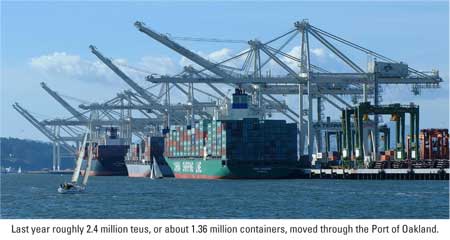
CALIFORNIA PORTS 2008 - A billion in spending makes Oakland a competitor
Sep 21, 2008 | Published in Issue
Last year roughly 2.4 million teus, or about 1.36 million containers, moved through the Port of Oakland with 86% of that trade going to international ports 14% being delivered to domestic customers.
Of this traffic, Asia was easily the most significant trading partner for the port. Marilyn Sandifur, port spokesperson told AJOT that in 2007, 80% of the teus that moved through the port either originated from or were destined for Asia.
For almost a decade, the Port of Oakland has been involved in a three-pronged development program, including new and renovated container terminals, channel and berth deepening to -50 ft and large, efficient intermodal rail facilities connected to upgraded mainline rail systems, Sandifur said. Called Vision 2000 the program has brought major maritime terminal and rail terminal improvements to the port.
Although not part of Vision 2000, the harbor-deepening project, has been funded by the port and the federal government and, to date, the Port of Oakland has spent a total of roughly $1 billion on the Vision 2000 program and the dredging project combined and has now completed its expansion program.







